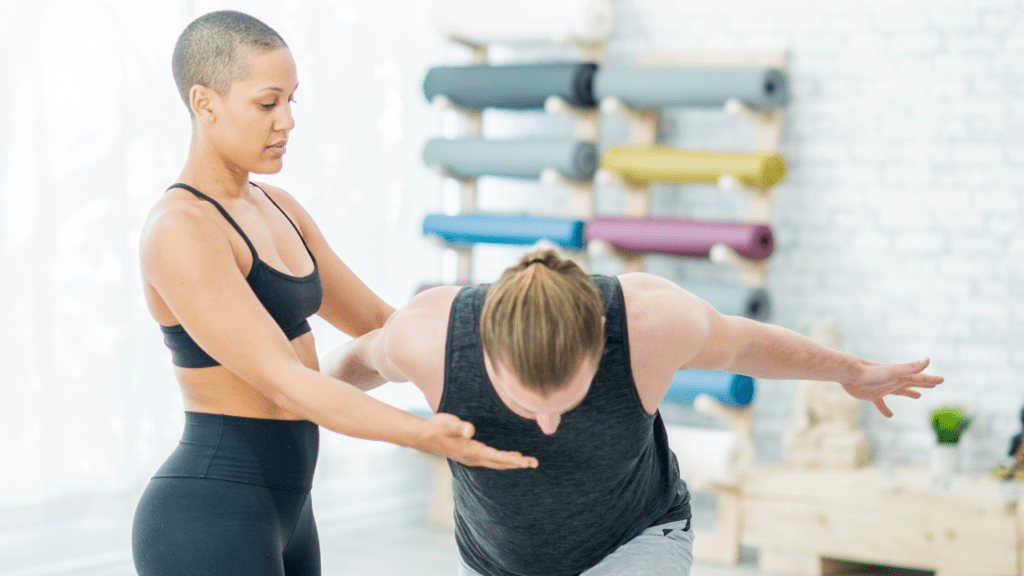
Safety first
Exceptional practice for yoga professionals. By Abeni El-Amin
The purpose of this article is to reflect on how and why the yoga teaching method must be safe for every student who attends mind-body classes. Yoga must be a safe practice for participants, regardless of age, body type, or fitness ability. Participants should experience a safe yoga practice as it will promote well-being for not just the body, but mind and well-being.
As a professional yoga instructor, it’s important to convey and organise practice so that participants will continue to return and enjoy the many benefits of a comprehensive yoga practice. Yoga has been around for over 2000 years and continues to inspire and invigorate those who practice its tenets. It is beneficial for holistic well-being, flexibility, athleticism, and mental stimulation, and participants report yoga gives them more confidence. There is duality in respect to safety in practice in that yoga professionals are ultimately responsible for the safety of all, yet participants have a responsibility to listen to instructor guidance and adhere to studio rules of engagement. Moreover, given that yoga participants are not necessarily aware of safety it is incumbent for the instructor to provide a safe environment on behalf of the participant.
A well-organised yoga practice promotes safe environments for yoga participants because when a yoga instructor knows what they are going to do from start to finish, yoga participants feel more comfortable with precise and tempered instruction, rather than haphazard and disorganized guidance. New yoga participants should experience a safe yoga environment because the goal of a yoga practice is to encourage new and also well-established participants to return. If a practice is not well organised or intentional, yoga participants who are new to a class may not return and may speak poorly of the instructor, and the facility.
Athletes often frequent yoga studios and must experience a safe yoga practice as well. Although athletes may seem knowledgable about form and are more aware of their bodies than novice participants, they too can benefit from alignment cues. An athlete can experience several benefits from taking part in a yoga practice and using yoga techniques in the field. For instance, yoga allows one to keep muscles supple and fluid. Having a dedicated yoga practice consistently promotes athletic endurance. Athletes in particular need a safe yoga practice so they do not injure themselves before competitions. If a yoga instructor is not critical and thoughtful about safety techniques, it can lead to not just injuring yoga participants but also legalities.
Safe environmental considerations include yoga studio space, lighting, the temperature of the room, aesthetics, auditory, and olfactory factors. Music should be low, but audible to promote a peaceful and tranquil atmosphere. If using a microphone, music should be in the background of the yoga instructor’s voice so participants may clearly hear the instructor's cues. Those cues may be for alignment, mediation, visualisation, or safety. Nonetheless, participants should be able to hear the instructor. Likewise, lighting is an important factor in a safe yoga practice, because students need to see what they’re doing and the yoga instructor needs to be able to encourage students to achieve proper alignment within a yoga class. Additionally, to reduce trip hazards for students and instructors, there should not be lots of other extraneous equipment on the yoga studio floor. In regards to alignment positioning, yoga instructors should have enough training and practice that they can adjust their yoga participants based on their needs. Some of those needs are physical and others are aligning participants so they do not overextend muscles ligaments and tendons.

It is incumbent upon the yoga instructor to understand the different issues that can arise from not having a safe practice environment for participants. Some of the issues that can occur are injury, creating a poor experience for the participant, and a poor reputation. As a professional yoga instructor, it is important to try to mitigate all issues that arise from being unprepared while teaching yoga. Finally, yoga instructors should secure a comprehensive insurance policy to protect themselves against legalities in case of a participant complaint or injury; however, if yoga instructors practice safe techniques they may mitigate potential legal proceedings altogether.







